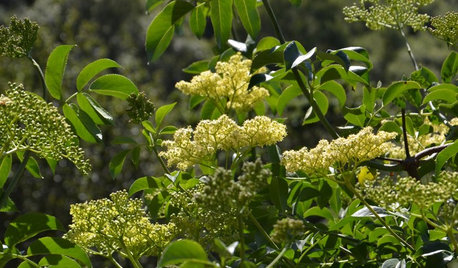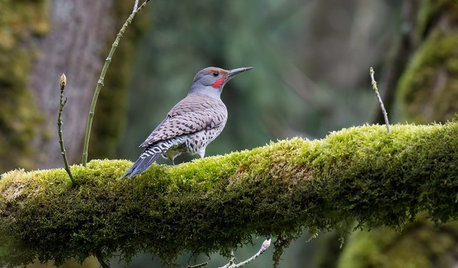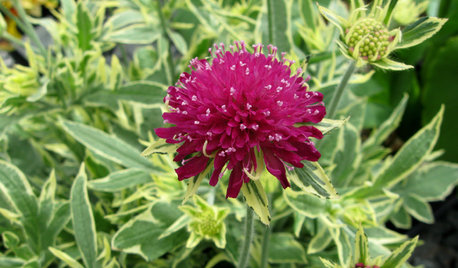Red Elderberry
newyorkrita
20 years ago
Related Stories

GARDENING GUIDESBackyard Birds: Northern Cardinals in the Snow, and Other Red Birds
Brilliant crimson feathers make these friends stand out in a crowd
Full Story
GARDENING GUIDESGreat Design Plant: Sambucus Nigra Caerulea for the Birds
Blue elderberry is a favorite of birds and other wildlife in its native California
Full Story
GARDENING GUIDESGreat Design Plant: Sambucus Nigra
Common elderberry is a highly adaptable shrub from the eastern U.S., with berries galore for wildlife and humans alike
Full Story
GARDENING GUIDESBackyard Birds: Healthy Home Habitats for Northern Flickers
These colorful woodpeckers found across the U.S. and Canada love berries, seeds and ants and often nest in deep burrows in trees
Full Story
GARDENING FOR BUTTERFLIESGreat Design Plant: Thunder and Lightning for Midsummer Garden Color
Get over the mouthful of a name; focus on the dramatic foliage and gorgeous magenta flowers of Thunder and Lightning field scabious
Full Story
GARDENING GUIDES12 Japanese Maples for a Sunny Garden
The right maple in the right place shines in hot summer sun
Full Story
LANDSCAPE DESIGNHow to Incorporate Your Roofing Into the Landscape
Choose hardscape and plantings that work with your roof’s color, texture, shape and line
Full Story
GARDENING GUIDESGarden-Friendly Native Alternatives to Overplanted Exotics
There are lots of gorgeous, wildlife-friendly native plants ready to make an appearance in your garden
Full Story
GARDENING GUIDES8 New Ways to Garden This Year
A successful garden means knowing the plants, the wildlife and yourself
Full Story
GARDENING GUIDES8 Native Shrubs for Year-Round Bird Feeding
It’s not just about berries. These plants provide insects for birds and seasonal interest for gardeners
Full Story





kurtg
Judy_B_ON
Related Professionals
Allen Landscape Architects & Landscape Designers · Surprise Landscape Architects & Landscape Designers · Baltimore Landscape Architects & Landscape Designers · River Forest Landscape Architects & Landscape Designers · Saint Charles Landscape Architects & Landscape Designers · Tomball Landscape Architects & Landscape Designers · Waunakee Landscape Architects & Landscape Designers · Madera Landscape Contractors · Tewksbury Landscape Contractors · Quartz Hill Landscape Contractors · Summerlin Carpenters · Boston Siding & Exteriors · Brunswick Siding & Exteriors · Liberty Siding & Exteriors · San Antonio Siding & Exteriorsgardeningangel_z6
newyorkritaOriginal Author
leefinch
larry_gene
newyorkritaOriginal Author
newyorkritaOriginal Author
newyorkritaOriginal Author
newyorkritaOriginal Author
newyorkritaOriginal Author
sharons2
lukifell
hemnancy
newyorkritaOriginal Author
charleskelm_gmail_com
Sharon66
fabaceae_native
KatyaKatya